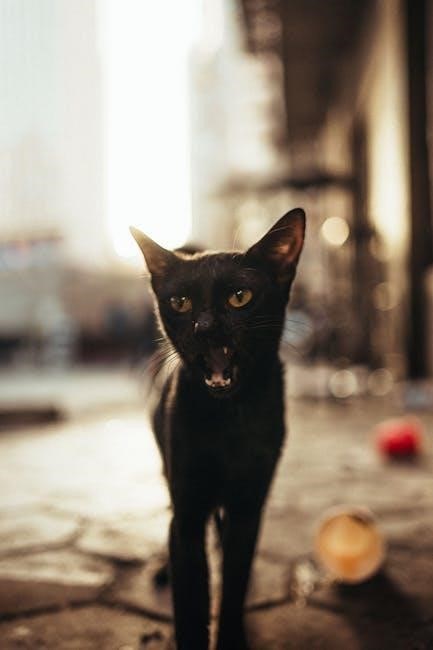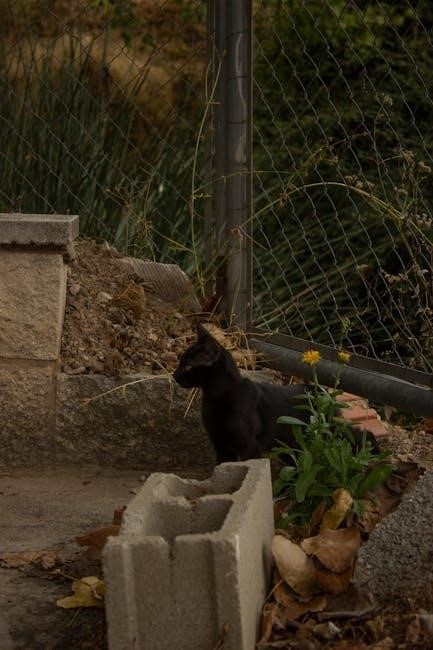
If Cats Disappeared from the World
This thought-provoking Japanese bestseller explores a world without cats, delving into themes of life, death, and human connection. First published in 2012, it has become a global phenomenon, sparking deep reflections on existence and the unseen impacts of everyday creatures.
If Cats Disappeared from the World, a captivating novel by Genki Kawamura, presents a unique and thought-provoking premise: a young man, diagnosed with a terminal brain tumor, is offered a deal by the devil to extend his life in exchange for erasing one thing from the world. Choosing cats, he sets off a chain of events that reveal the profound impact of their absence. This Japanese bestseller, now a global phenomenon, explores themes of life, death, and human connection, sparking reflections on the often-overlooked significance of everyday creatures. First published in 2012, the book has sold over two million copies and been adapted into a film, resonating with readers worldwide. Its blend of humor, philosophy, and emotional depth makes it a compelling read, inviting readers to ponder the meaning of life and the interconnectedness of all living beings.

The Literary and Cultural Significance of “If Cats Disappeared from the World”
If Cats Disappeared from the World has gained global acclaim for its unique storytelling and thought-provoking themes. As a bestseller in Japan and worldwide, it has transcended cultural boundaries, inspiring reflection on life’s meaning and the impact of small creatures on human existence. Its adaptation into a film further solidified its cultural influence, making it a defining work in contemporary Japanese literature. The book’s ability to blend humor, philosophy, and emotional depth has resonated with readers globally, establishing it as a modern literary phenomenon.
The Japanese Novel and Its Global Impact
If Cats Disappeared from the World emerged as a literary sensation in Japan, selling over two million copies and captivating readers with its unique blend of humor, philosophy, and emotional depth. Written by Genki Kawamura, the novel was first published in 2012 and later translated into English, introducing its thought-provoking themes to a global audience. Its universal appeal lies in its ability to explore complex human emotions and existential questions through a simple yet profound premise. The book has been praised for its ability to transcend cultural boundaries, resonating with readers from diverse backgrounds. Its success has also led to a film adaptation, further cementing its place in popular culture. The novel’s global impact highlights the power of Japanese literature to address universal human concerns, making it a standout work in contemporary storytelling. Its influence continues to grow, inspiring reflections on life, loss, and the unexpected ways in which small creatures shape our world.

Key Themes and Symbolism in the Book
The novel If Cats Disappeared from the World delves into profound themes such as the meaning of life, the impact of small creatures on human existence, and the interconnectedness of all living beings. Cats symbolize comfort, companionship, and the subtle yet significant ways they shape human lives. Their disappearance serves as a metaphor for loss and the unseen consequences of taking things for granted. The book also explores existential questions, urging readers to reflect on how they value life and relationships. The devil’s deal with the protagonist adds a layer of moral complexity, questioning the cost of survival and the choices we make. Through its unique storytelling, the novel highlights the often-overlooked ways in which even the smallest beings influence our world and our sense of purpose. This blend of philosophy and emotional depth makes the book a compelling exploration of what it means to truly live.
The Ecological Impact of Cats’ Disappearance
If cats vanished, ecosystems would face significant changes. Rodent populations could surge, impacting crops and wildlife. Bird species might decline without cats as natural predators. Agriculture would need new pest control strategies.
Effects on Wildlife and Ecosystems
The disappearance of cats would trigger a ripple effect across ecosystems. With cats no longer controlling rodent populations, these small mammals could surge, leading to overgrazing of vegetation and reduced crop yields. Wildlife, particularly birds and reptiles, would face new challenges as their natural predators disappear. Bird populations might decline due to increased competition for food and habitat loss. Ecosystems reliant on cats as a balancing force could experience instability, potentially altering biodiversity. Agricultural sectors would need to adapt pest control strategies, possibly increasing pesticide use or relying on alternative methods. The absence of cats would also reduce the spread of toxoplasmosis, a parasite they carry, potentially lowering its impact on humans and other animals. Overall, the loss of cats would create a cascade of ecological changes, reshaping wildlife dynamics and forcing nature to find a new equilibrium.
Changes in Pest Control and Agriculture
The absence of cats would significantly impact pest control and agriculture. Cats are natural predators of rodents, which damage crops and spread diseases. Without them, rodent populations could surge, leading to increased agricultural losses. Farmers might rely more heavily on pesticides, which could harm the environment and affect food safety. Additionally, the cost of pest control measures would rise, placing economic strain on the agricultural industry. Urban areas might also face challenges, as rodents could infiltrate homes and businesses, leading to higher extermination costs. The shift from biological to chemical pest control could have long-term consequences for ecosystems and human health. This change would force societies to adapt quickly, investing in new technologies or alternative methods to manage pest populations effectively. The economic and environmental impacts of losing cats as natural pest controllers would be substantial and far-reaching.

The Societal and Human Implications

The disappearance of cats would cause emotional distress for cat owners, economic losses for cat-related industries, and psychological impacts on human well-being. Societal shifts in companionship and social dynamics would emerge, altering community interactions and emotional support systems. The absence of cats would leave a void in human lives, prompting reflections on their role in mental health and social bonds; New industries might rise to fill the gap, but the emotional and psychological effects would be profound, reshaping how humans cope with loneliness and stress.
Psychological and Emotional Effects on Cat Owners
The sudden disappearance of cats would profoundly impact cat owners, leading to feelings of grief, loneliness, and emptiness. Many people form deep emotional bonds with their pets, and their absence would create a void in daily life. The loss of companionship and the routine of caring for a cat could exacerbate feelings of isolation, particularly for those who rely on their pets for emotional support. Mental health issues, such as anxiety and depression, might rise as individuals struggle to cope with the loss of a beloved companion. Additionally, the emotional attachment to cats often extends to their role as family members, making their disappearance feel like the loss of a loved one. This collective grief could lead to a societal shift in how people seek comfort and connection, potentially increasing demand for alternative forms of emotional support and companionship.
Economic Consequences on Cat-Related Industries
The disappearance of cats would trigger significant economic ripple effects, particularly in industries reliant on cat-related products and services. The pet food industry, which generates billions annually, would face a severe decline as demand for cat food and treats plummeted. Similarly, the market for cat toys, litter, and accessories would collapse, leading to widespread layoffs and business closures. Veterinary clinics specializing in feline care would need to adapt or risk financial ruin. Breeding and adoption services would also be severely impacted, as the demand for cats as pets would vanish. Additionally, industries like pet insurance, grooming, and cat cafes would suffer, further straining local economies. The loss of cats would not only affect businesses but also lead to a decline in related hobbies and communities, causing a cultural and economic void that would be challenging to fill. This economic upheaval would highlight the unseen yet substantial role cats play in human society and commerce.
The Book’s Exploration of Life and Death
The novel explores existential themes through a terminally ill protagonist, highlighting life’s fragility and the meaning of human connection, as he confronts mortality and negotiates a devilish bargain to extend his life.
The Protagonist’s Journey and Personal Growth
The protagonist, facing a terminal brain tumor, embarks on a profound journey of self-discovery. His encounter with the devil offers a chance to extend his life by erasing things from the world, leading to introspection about relationships, regrets, and the value of life. Through this process, he reflects on past friendships, lost loves, and the meaning of human connection. The narrative delves into his emotional and psychological transformation as he grapples with mortality and the consequences of his choices. This journey of personal growth highlights themes of redemption, the importance of cherished memories, and the interconnectedness of all things. The protagonist’s story serves as a poignant reminder to appreciate life’s fleeting moments and the impact of our actions on the world around us.
The Devil’s Deal and Its Moral Implications
In the story, the devil’s deal presents a stark moral dilemma, forcing the protagonist to confront the value of life and the consequences of his choices. The devil offers to extend the protagonist’s life in exchange for the erasure of specific things from the world, starting with cats. This deal raises profound ethical questions about the worth of individual lives, the impact of human decisions, and the balance between good and evil. The narrative explores the moral complexity of altering the world, even for personal gain, and whether such actions can ever be justified. The deal also serves as a metaphor for the broader human struggle with mortality and the desire to control the uncontrollable. By focusing on the devil’s proposition, the book challenges readers to reflect on their own values and the ripple effects of their choices. This moral exploration is central to the story’s depth and resonance.